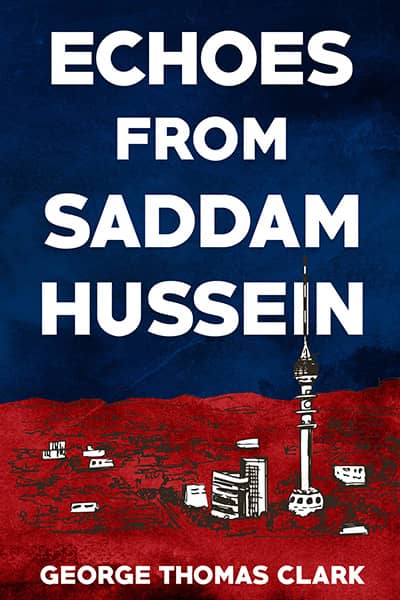Historian Presents the Statistics of War
May 12, 2010
I bumbled by that smoking, manure-laden vehicle that didn’t explode in New York City last week and felt foolish I wasn’t the one who detected it and that I should have since I’ve spent my career analyzing wars but concede I’m only a historian, hiding in academia, who would’ve cringed at the sound of real gunfire. Most politicians are that way, too, but at least I can offer some perspective from our very recent as well as distant past.
The United States had plenty to be angry and scared about after suffering almost 3,000 deaths on September 11, 2001. Of course, other nations already had lots to mourn, too, and have more now, and before I elaborate let me briefly emphasize what you surely know: they will keep trying to kill us as long as we keep killing them.
Do you think it’s unpatriotic to look at matters from the other victims’ point of view? In fact, it’s imbecilic not to and thus fail to understand that United States forces have slaughtered about 100,000 Iraqi civilians since 2003, constituting some 33 9/11’s, a lot of retribution against innocent people who possessed nary a weapon of mass destruction. And don’t claim that the U.S. was saving them from Saddam Hussein. It wasn’t saving but bombarding the Iraqis, and they’ve still got a hell of a mess, one you probably haven’t been hearing much about in the American media. Fortunately, Aljazeera in English reminds us that multiple attacks, coordinated by insurgents, erupted Monday May 10 in several cities. Eighty-five people died in Baghdad while 35 perished in Hillah and 13 were killed in Basra and four more in Fallujah and three in Tarmiya, and in all these places about five times as many were injured. If that happened in the United States, would you consider that liberation?
Afghanistan actually harbored enemies of the United States in 2001 and was rightly attacked and in fact should have been more thoroughly invaded and controlled. Even in an Afghan campaign limited by the build-up prior to the phantom-weapons chase in Iraq, United States special forces and bombs killed more than 3,000 Afghan civilians from 2001 to 2003. The Taliban had been killing and continues to kill many civilians but it’s harder to keep good stats on what they’re doing. Though in Western eyes an Afghan life is worth even less than an Iraqi life, the U.S. does know its forces have been killing roughly 1,000 civilians a year. Meanwhile, the Taliban continues to modernize its infrastructure and expand power and influence.
So why doesn’t the United States fully engage and destroy the Taliban? The U.S. would like to but that would require many more American fatalities than 117 in 2007, 155 in 2008, 316 in 2009, and 117 so far this year. Instead of putting an overwhelming number of boots on Afghan soil, the U.S. prefers to go after terrorists with drones –Unmanned Aerial Vehicles – that too often destroy houses occupied by women and children, and then solemnly assure the enraged and grieving Afghans that their lives really are meaningful. To demonstrate their compassion, American authorities have introduced a technological wonder, the 35-pound Small Smart Bomb, affectionately dubbed “The Scorpion,” to replace those frightfully messy 100-pound explosives. And differentiating the terrorists from the kids may become less difficult with the advent of micro-wave UAVs about the size of pizza platters that for hours, even days, can quietly hover close to potential targets.
The Pakistanis are also appalled by civilian deaths unleashed by drones. But compared to the Afghans, they’re quite fortunate, having lost only a couple hundred civilians in that manner since January 2009. I have not in any way presented the forgoing statistics to suggest that the Taliban and Al Qaeda, malignancies both, should be allowed to survive. On my desk right now I have an 18-page, small-type list of terrorist attacks in Pakistan since 2001. The terrorists, the ones with beards, have killed far more Pakistanis than the drones. And, it should be more widely noted in the West, hundreds of Pakistani soldiers are dying every year in the fight against heathens in the lawless northwest tribal region that should have been controlled, years ago, by the Pakistanis.
Perhaps, in a relative sense, we’re in a period of restrained warfare. The United States is no longer willing to sustain 55,000 casualties in three days, as during the Battle of Gettysburg in 1863. One hopes that the great wars and enormous battles and endless sieges have forever departed. Otherwise, on the chronological stat sheet, we’ll see new versions of five-time entry Alexander the Great engaging in unnecessary battles that twice resulted in more than 50,000 casualties. We’ll note there’s another Battle of Sedan with 200,000 casualties as during the Franco-Prussian War in 1870. We’ll wince at long lists of six- and seven-figure casualties like those from World War I. We’ll grieve at even greater losses that recall the nihilism of World War II. We in the West may even remember hundreds of thousands of deaths on each side in the war between Iran and Iraq in the 1980’s.
And I hope we’ll soon establish an ironclad international law. Those who make the wars have to fight in them. Be assured that would reduce the number and duration of conflicts. Today, even Alexander would be wearing a suit.














